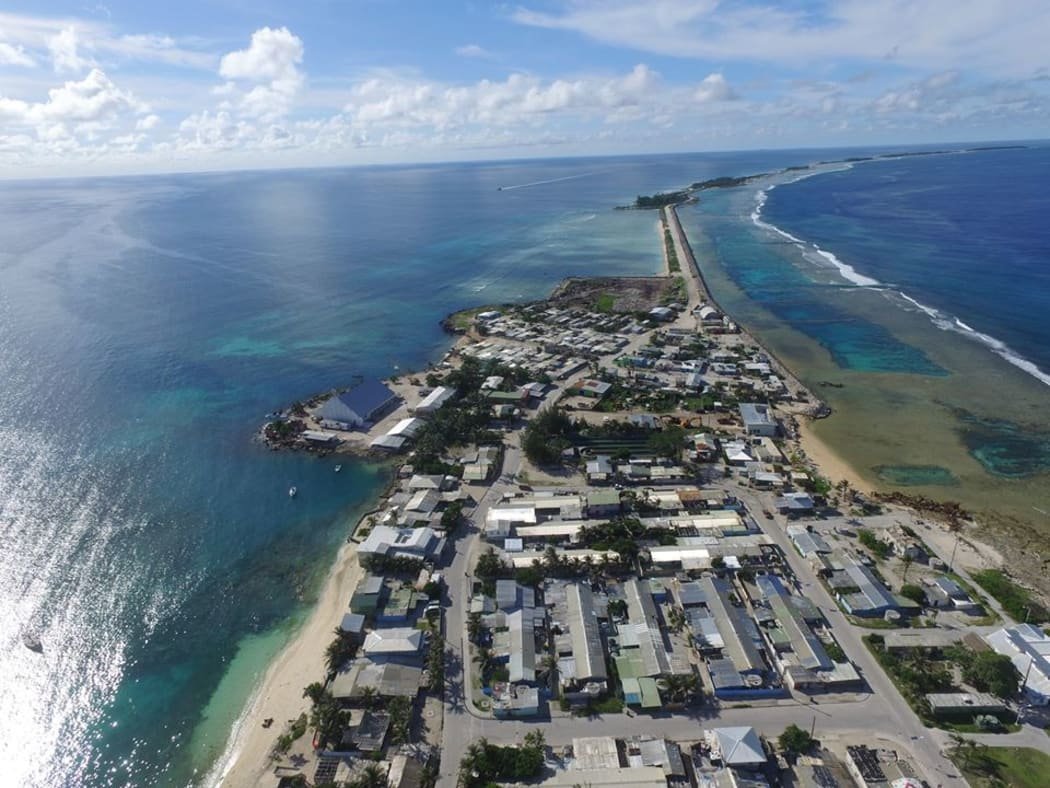Now:here
2025 Design Build Challenge.
Extreme heat, drought and wildfires continue to dot the planet. These disasters are affecting large swaths of our lands and it is too late to convince the world whether the climate is changing, when it is in collapse. Mass extinction of species has begun and areas of the world will soon become uninhabitable. Our only option is adaptation. None more so than in the Pacific Ocean.
Communities living on low lying islands and atolls are at the frontline of this collapse. We can now estimate how many years these nations have until they will be forced to relocate their population, culture and history. Worldchanging Institute has been working in collaboration with a coalition of partners and local leadership to develop sustainable solutions for current population while adapting for the next generation.
As part of this initiative the institute are looking to launch our first international open design competition in a decade. We believe the worlds’ design and architecture community can focus its creative resources to develop innovative solutions, that can be utilized by many similar island nations.
Phase 1
The Competition
In January 2024 we will launch an international design competition to develop adaptive shelter solutions for the families located on Kwajalein Atoll in the Pacific Ocean (also known at The Marshall Islands). Winning entries will be awarded over $25,000 in awards and one or more selected entries will be invited to be developed into built solutinos.
Having developed and led design build competitions for over a decade, this will be our first design build challenge for a climate-adaption community.
Phase 2
Build Prototype(s)
After selecting the winning design(s), we will work with the design teams to present and potentially build a prototype at the Festival of Pacific Arts & Culture (FestPAC) in June 2024.
The Pacific Community - SPC (formally the South Pacific Commission) launched a dynamic showcase of arts and culture in 1972 to halt the erosion of traditional practices through ongoing cultural exchange. The 13th Festival of Pacific Arts & Culture, will convene in Hawaiʻi June 6–16, 2024 and is the world’s largest celebration of indigenous Pacific Islanders. Together with our partners we will present the competition finalists and build one (or more) of the winning solutions.
Phase 3
Scale innovation
As phase three funding is secured we will work with partners to develop an operating system for scaling solutions. We will continue to engage with local communities and help to implement shelter solutions.
Background
The Marshall Islands are scattered over an area of 775,000 square miles in the central Pacific Ocean and contain approximately 1,225 islands grouped together within 29 atolls, of which 20 are uninhabited. Whilst the Marshall Islands cover a vast surface area, the combined land area of the Islands comprises only some 70 square miles. w to Kwajalein Atoll, the world's largest atoll and the location of this design/build competition. The atoll is 274 miles from Majuro, the capital of the Marshall Islands, contains approximately 100 islands, and is home to over 11,000 people. The total land area within the atoll is 5.6 sq. miles (14.5 sq km).
Location
Ebeye, the most populated island within Kwajalein, is approximately 77 acres (31 hectares) in size, with approximately 9,800 very poor residents. It’s considered to be one the most densely populated areas in the world. Roughly 950 of the people living on Ebeye work for subsistence wages on the U.S Army base on a neighboring island. Ebeye itself is divided into 10 sectors, with roughly a thousand people within each sector (called a weito). Ebeye contains condensed and simple housing conditions; many are one-room structures made of plywood, tin and plastic sheeting arranged in tenement conditions with limited access to potable water. Houses are generally single story, covering the entire plot and may house 30 people spanning multiple generations. Toilets are uncommon. Latrines are nearby.
Population
In 1920 there were less than 430 people living on the Kwajalein Atoll. By 2027 over 12,000 people will call this home. By 2040 this atoll and the entire nation may forced to relocate, making it one of the few in the world that simultaneously in danger of disappearing while suffering from overpopulation.

